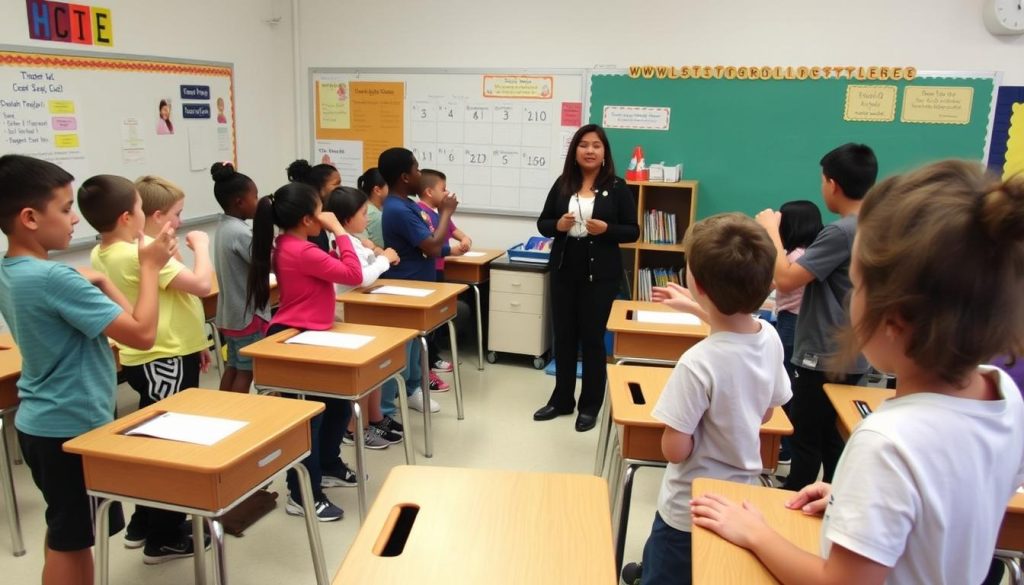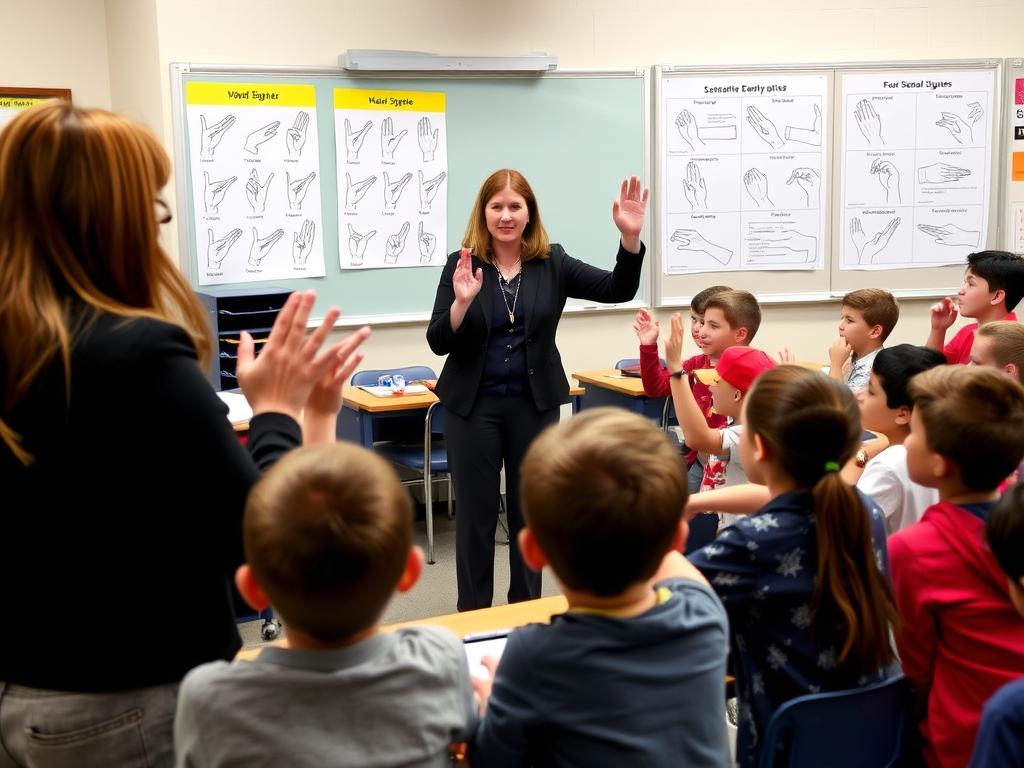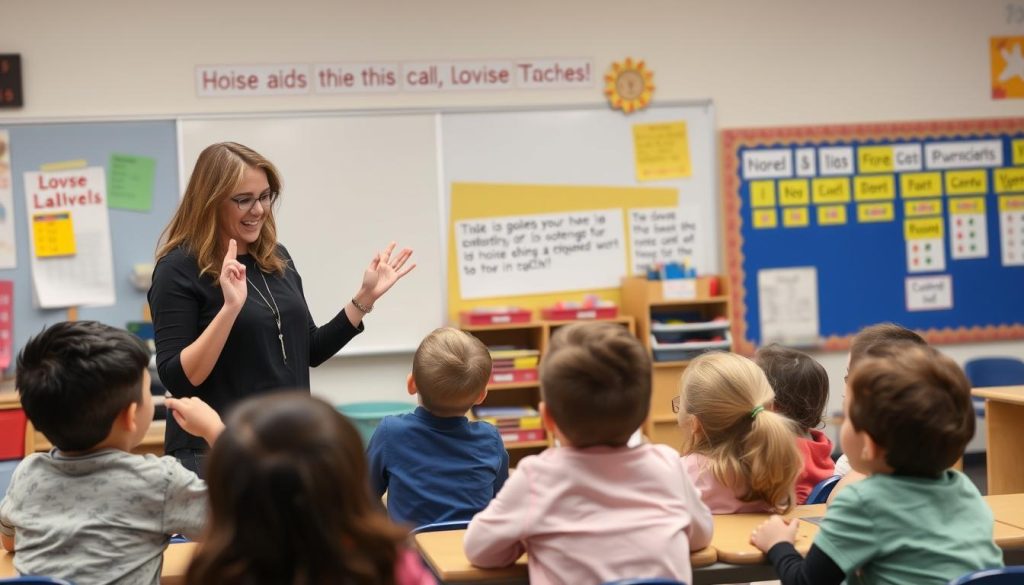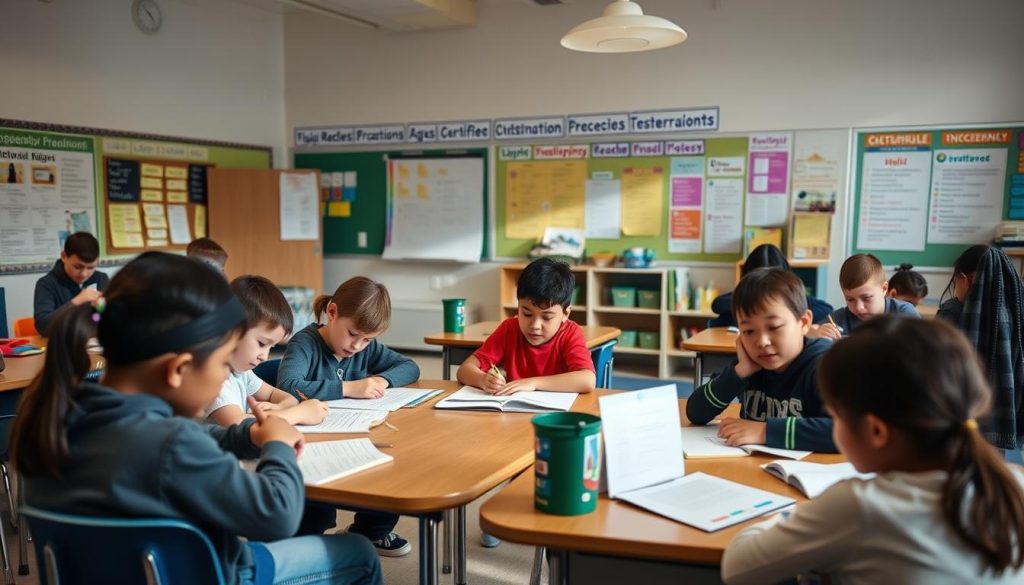Understanding the Noisy Classroom Dynamic
Before diving into solutions, it’s important to understand why classrooms become noisy in the first place. Noise isn’t always negative – sometimes it indicates engaged learning and collaboration. However, disruptive noise that interferes with learning needs to be addressed. Developing teacher skills to distinguish between productive and counterproductive noise is the first step toward effective classroom management.
Classroom noise typically stems from several sources: transition times, group activities, lack of clear expectations, or simply high energy levels. By identifying the specific causes in your classroom, you can target your management strategies more effectively. Remember that different age groups and classroom compositions require different approaches – what works for elementary students might not be effective for middle schoolers.
“The most effective teachers don’t just manage noise – they channel student energy into productive learning experiences.”
Preventative Strategies for a Noisy Classroom
The best way to handle a noisy classroom is to prevent excessive noise before it begins. These first five tools focus on setting the stage for a focused learning environment.
1. Establish Clear Expectations
Students need to understand what acceptable noise levels look like in different situations. Create visual noise level charts that indicate appropriate volume for various activities. This fundamental teacher skill helps students self-regulate their behavior.
2. Design Strategic Seating
Thoughtful seating arrangements can significantly reduce noise issues. Consider separating chatty students and creating zones for different activities. Flexible seating options can also help accommodate different learning styles.
3. Use Visual Cues
Visual signals help manage noise without adding to it. Traffic light systems, hand signals, or timer displays give students clear indicators without requiring you to raise your voice.
4. Implement Transition Routines
Transitions between activities are prime times for noise escalation. Develop consistent routines and signals for transitions to minimize disruption. This teacher skill creates predictability that helps students stay focused.
5. Create a Calm Physical Environment
Your classroom’s physical setup influences noise levels. Consider acoustic-friendly materials, strategic furniture arrangement, and designated quiet zones to create a more sound-controlled environment.
6. Teach Active Listening
When students develop strong listening skills, overall classroom noise naturally decreases. Incorporate specific listening activities into your lessons to strengthen this crucial skill.
Master Classroom Management
Our Effective Discipline course provides in-depth strategies for creating a positive, focused classroom environment.
Immediate Interventions for a Noisy Classroom
Even with preventative measures in place, there will be times when noise levels rise unexpectedly. These next seven tools provide immediate interventions to regain control of a noisy classroom.

7. Attention Signals
Develop a consistent attention signal that cuts through noise without adding to it. Options include chimes, clapping patterns, or raised hand signals. This essential teacher skill allows you to regain focus quickly.
8. Voice Modulation
Counterintuitively, lowering your voice rather than raising it can be more effective. When you speak quietly, students often quiet down to hear what you’re saying.
9. Strategic Silence
Sometimes the most powerful tool is silence. Stop teaching and wait quietly until students notice and quiet themselves. This technique leverages peer pressure positively.
10. Proximity Control
Simply moving closer to noisy areas of the classroom can reduce disruptive behavior. This subtle teacher skill shows awareness without disrupting the flow of the lesson.
11. Brain Breaks
Sometimes noise increases because students need physical or mental release. Short, structured brain breaks can reset focus and reduce disruptive noise.
12. Noise Monitoring Apps
Technology can help manage classroom noise. Apps like Too Noisy or Bouncy Balls provide visual feedback about noise levels that students can self-monitor.

13. Positive Reinforcement
Acknowledge and reward quiet, focused behavior. This teacher skill of positive reinforcement is far more effective than constantly addressing disruptive behavior.
Long-Term Solutions for a Noisy Classroom
Beyond immediate interventions, these final seven tools help create lasting change in your classroom’s sound environment.
14. Teach Self-Regulation
Help students develop awareness of their own noise levels and impact on others. This teacher skill empowers students to take responsibility for the classroom environment.
15. Establish Non-Verbal Communication
Develop a system of hand signals or visual cues for common requests to reduce unnecessary talking. This reduces interruptions and background noise.
16. Create Engagement Protocols
Establish clear structures for participation like think-pair-share or response cards that allow engagement without creating chaos.

17. Implement Collaborative Noise Monitoring
Assign student “sound managers” who help monitor and maintain appropriate noise levels. This teacher skill of delegating responsibility builds student leadership.
18. Use Background Music Strategically
Soft, instrumental music during independent work can actually reduce overall noise by providing consistent background sound that masks disruptive noises.
19. Reflect and Adjust
Regularly evaluate what’s working and what isn’t. Different classes may need different approaches, and flexibility is a crucial teacher skill.
20. Build Relationships
Perhaps the most powerful tool of all is strong teacher-student relationships. When students feel respected and valued, they’re more likely to respect classroom expectations.

Enhance Your Teacher Skills
Access our complete library of classroom management resources to transform your teaching experience.
Implementing These Tools in Your Noisy Classroom
The key to success with these strategies is consistent implementation. Start by selecting 2-3 tools that address your specific classroom challenges. Introduce them one at a time, practice them with your students, and reinforce them consistently. Remember that developing effective teacher skills for noise management takes time and patience.

Consider creating a personal action plan for implementing these strategies. Which tools will you try first? How will you introduce them to your students? What success metrics will you use? By approaching noise management systematically, you’ll develop teacher skills that serve you throughout your career.
Benefits of Effective Noise Management
- Increased instructional time
- Reduced teacher stress and burnout
- Improved student concentration
- Better academic outcomes
- More positive classroom culture
Challenges to Address
- Inconsistent implementation
- Varying student needs
- Physical classroom limitations
- Time constraints
- School-wide noise factors
Creating Your Calm Classroom
Managing a noisy classroom effectively is one of the most valuable teacher skills you can develop. By implementing these 20 tools strategically, you’ll create an environment where both you and your students can thrive. Remember that the goal isn’t complete silence – it’s creating a sound environment that supports learning and engagement.
The journey to a calmer classroom is ongoing. Celebrate small victories, learn from challenges, and continue refining your approach. Your commitment to developing these teacher skills will pay dividends in student learning and your own professional satisfaction.

Transform Your Classroom Experience
Get our comprehensive classroom management system with proven strategies for creating a positive learning environment.




